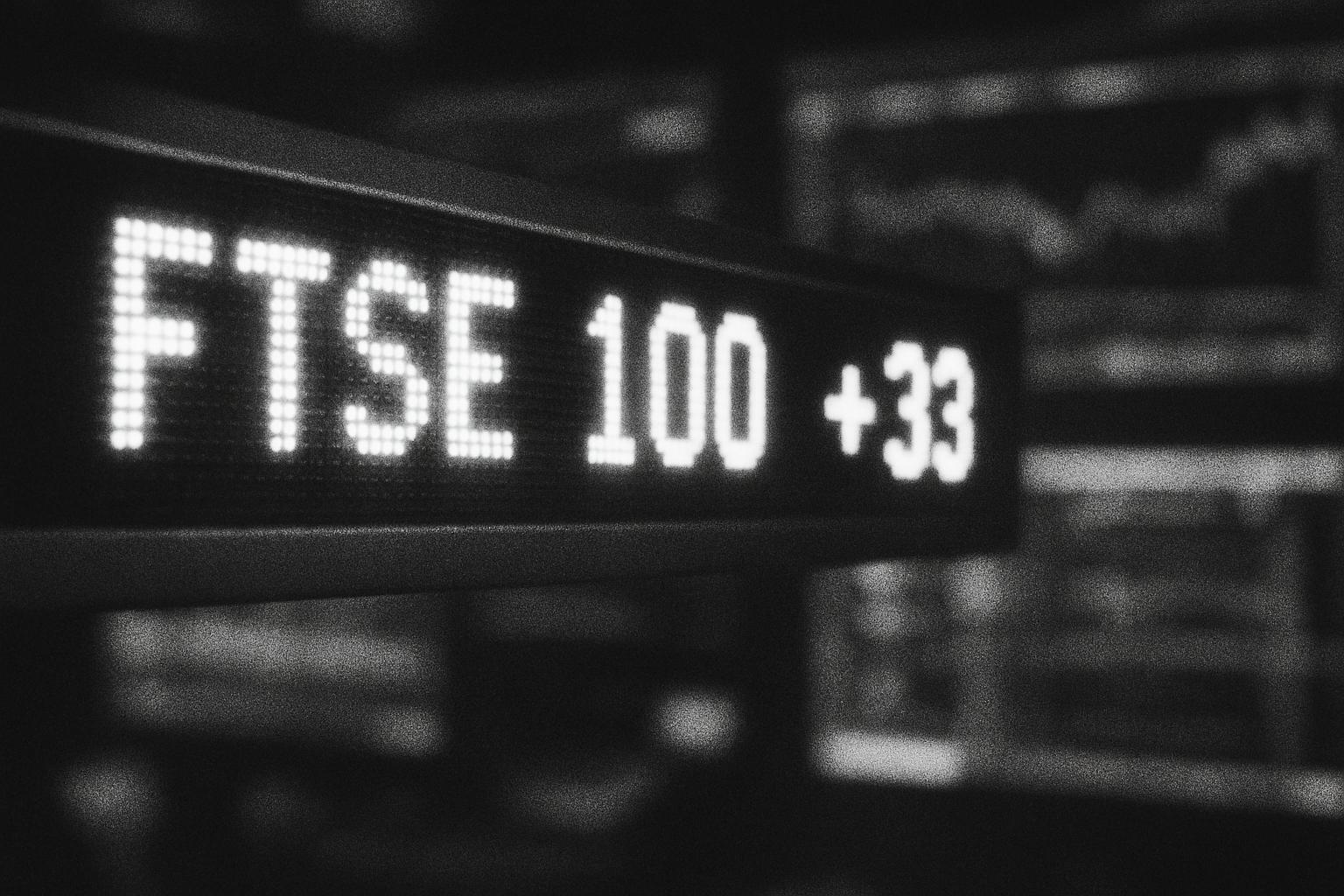Britain’s blue‑chip market edged higher on Monday, with the FTSE 100 gaining around 33 points to finish near 9,129 as financial and domestically‑focused consumer stocks outperformed. By contrast, major continental bourses were mixed — Paris’s CAC fell and Frankfurt’s DAX slipped — while Dublin’s ISEQ lost ground, weighed by a handful of notable movers. In New York, trading was choppy: the Dow eased slightly while the S&P 500 and Nasdaq showed smaller gains as investors digested a busy calendar and fresh trade developments. According to the original market update, heavyweight Irish names such as Uniphar and Irish Residential Properties rose on the day while Datalex and Kingspan lagged.
Market participants said the rally in London was concentrated in life insurers, banks and other financials, with consumer‑exposed stocks also benefiting as investors rotated toward more domestically sensitive names amid international trade uncertainty. Reuters noted that a pullback in defence stocks reflected a tentative thaw in diplomatic rhetoric around Russia‑Ukraine, while CNBC highlighted that geopolitics and the expiry of an informal US‑China tariff truce were on traders’ radars as key contextual drivers. Analysts flagged that the relative strength of UK domestic plays reflected both safe‑haven flows into familiar earnings streams and the prospect of policy clarity from forthcoming economic data.
Across the Atlantic, US markets wavered as traders absorbed reports of a novel arrangement involving some major chipmakers and the US government that could see a portion of revenues from certain advanced chip sales tied to China redirected as part of a broader trade‑policy shift. Reuters described bouts of volatility in semiconductor names — including the sector leaders — after details of the approach emerged, with commentators warning the levy could pressure margins and establish a new precedent for supply‑chain arrangements. Those developments appeared to underpin some of the risk‑off moves and cross‑market ripples witnessed during the session.
Beyond the trade headlines, investors are braced for a series of economic releases that could sway central‑bank expectations and market positioning. Reuters reported traders were awaiting UK employment figures and a crucial US consumer‑price index release that together could influence rate outlooks, while CNBC pointed to the broader calendar — including data and policy milestones — as pivotal for near‑term direction. Market commentary suggested that, until those prints arrive, flows may remain sensitive to headlines on diplomacy and trade.
Ireland’s main benchmark, the ISEQ, ended lower on the day, with the market snapshot supplied to domestic audiences showing Uniphar and Irish Residential Properties among the stronger performers and Datalex and Kingspan among the laggards. RTE’s market page — drawing on live feeds — listed the last trade prices and daily percentage moves for those companies, while Investing.com’s index overview provided the intraday range and broader context for the ISEQ’s position around the mid‑eleven‑thousand mark.
The move in Kingspan’s share price was notable given the group’s recent corporate actions. The Irish Times reported on 8 August that Kingspan had published half‑year results showing revenue growth and unveiled a substantial €650 million share buy‑back programme. Market commentators suggested that, despite the buy‑back and stronger top‑line figures, investors may have been digesting margin pressure from raw‑material costs and taking profits after the strong run, a dynamic that can blunt an otherwise supportive capital‑return announcement.
Looking ahead, traders will watch closely for the upcoming inflation and labour‑market releases and any concrete developments from renewed diplomatic talks, which together will be pivotal in shaping central‑bank communications and risk appetite. Reuters and CNBC both emphasised that until those data points and geopolitical updates provide clearer direction, markets are likely to trade with caution, especially in sectors directly exposed to trade policy and defence‑related sentiment.
📌 Reference Map:
##Reference Map:
- Paragraph 1 – [1], [2], [4]
- Paragraph 2 – [2], [4]
- Paragraph 3 – [3], [1]
- Paragraph 4 – [2], [4]
- Paragraph 5 – [1], [6], [5]
- Paragraph 6 – [7], [1]
- Paragraph 7 – [2], [4], [3]
Source: Noah Wire Services
